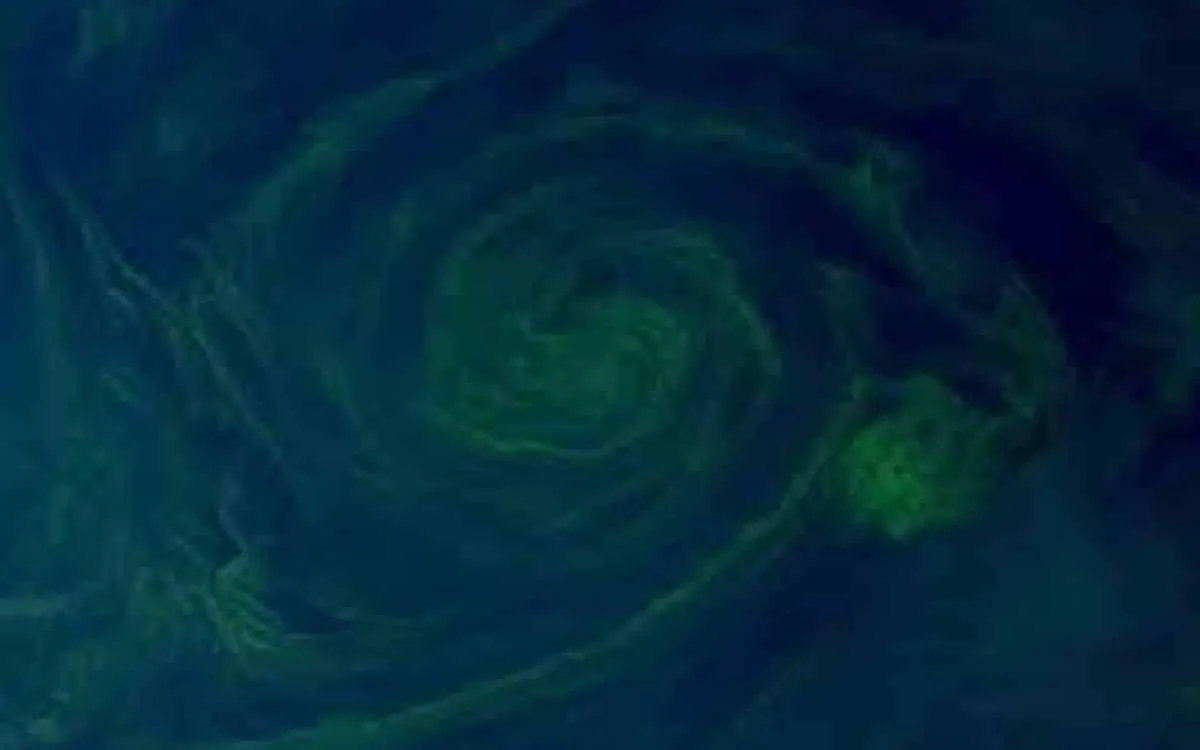
A breathtaking display of color visible from space is capturing global attention—not for its aesthetic appeal, but for the alarming message it conveys. The Gulf of Oman is experiencing increasingly frequent phytoplankton blooms, primarily driven by seasonal monsoon winds. These blooms are now dominated by Noctiluca scintillans, a species that signals significant disruptions in marine ecosystems throughout the region.
According to SciTechDaily, between January and March and again from June to August, seasonal monsoon winds stir the surface waters of the Gulf of Oman. This stirring action leads to nutrient-rich upwelling, which fuels the explosive growth of phytoplankton. These microscopic organisms are crucial as they form the base of the marine food web and generally indicate a healthy oceanic environment. Their blooms can extend for miles, creating vibrant green ribbons on the ocean surface, easily captured by satellites like NASA’s Landsat 8 and the PACE satellite’s Ocean Color Instrument (OCI).
However, the recent blooms are not just lush; they are increasingly dominated by a concerning invader. The rise of Noctiluca scintillans among these colorful displays raises alarms about the health of the marine ecosystem.
Within the colorful chaos of the Gulf of Oman’s phytoplankton blooms, one species has emerged as a dominant force: Noctiluca scintillans. This bioluminescent dinoflagellate is captivating at night with its glowing presence, yet it poses significant ecological threats. Unlike traditional phytoplankton such as diatoms, which require abundant nutrients and support a diverse range of marine life, Noctiluca thrives in stratified, low-nutrient waters.
Initially present in modest numbers, Noctiluca scintillans has now become the dominant species in many blooms across the Gulf of Oman and the Arabian Sea. Its expansion not only displaces diatoms but also dismantles the regional food web. The phytoplankton blooms in the Gulf of Oman are not merely stunning seasonal phenomena; they are indicators of a transforming marine ecosystem, where the growing prevalence of oxygen-depleting Noctiluca scintillans serves as a stark warning.
When Noctiluca blooms die, they sink and decompose, a process that consumes large quantities of oxygen. This decomposition can lead to hypoxic conditions, depriving marine organisms of the oxygen necessary for survival. Increasing occurrences of fish kills and collapsing habitats have been noted. Over recent decades, the transition from diatom-dominated ecosystems to those led by Noctiluca has resulted in cascading ecological impacts: a reduction in copepod populations (a vital food source for fish), an increase in jellyfish and salps, and dwindling numbers of commercially important finfish. Such shifts threaten local fisheries and pose a risk to food security in nations reliant on this vital waterway.
Strategically located between Iran and Oman, and directly feeding into the Strait of Hormuz, the Gulf of Oman is more than an ecological hotspot. It serves as a crucial maritime artery, integral to global trade and regional economies. The encroachment of oxygen-depleted zones could jeopardize not only biodiversity but also shipping and fisheries, adding an environmental dimension to the region’s existing geopolitical sensitivities. As we continue to observe these alarming changes, it becomes increasingly clear that the health of the Gulf of Oman is vital not just locally, but on a global scale.